
Faseela K writes:
"KubeCon NA 2025 in Atlanta was my second time as a co-chair, and it was truly special. The months leading up to the conference were filled with planning — working closely with my fellow co-chairs to curate tracks, sessions, and talks that reflected the diversity, innovation, and impact of the cloud-native ecosystem. Every detail mattered: speaker lineups, session scheduling, and ensuring attendees would walk away inspired and informed.
Alongside co-chair responsibilities, I had the incredible opportunity to deliver a keynote dedicated to a topic close to my heart: bringing end-users working on humanitarian initiatives to the stage to discuss cloud-native impact.
As the conference approached, travel chaos loomed — government shutdowns disrupted flights, and there was general uncertainty. Thankfully, my travel went smoothly, but I was concerned for panelists coming from across the globe.
Before the main conference, I attended the Maintainer Summit on November 9th. As a CNCF TOC member, this was the perfect opportunity to sync with fellow TOC members, TAG leads, and project maintainers. We shared insights, reflected on the past year, and explored collaboration opportunities — a reminder of the passion and talent within the CNCF community.
Day 0 – Co-located Talks and TOC Workshop & Day 1
Before the main conference, I presented two sessions at two of the co-located events. The first, Next Level of Telco Observability for Autonomous Networks Using OpenTelemetry, with my Ericsson colleague Jörg Aelken at the Observability Day, explored how cloud-native observability supports distributed telecom networks, highlighting real-world implementations with OpenTelemetry.
The second, Shaping Platform Engineering’s Future: From Community to Industry Standard Certification, at the Platform Engineering Day, was a panel discussion with Atulpriya Sharma, Chris Plank, and Christophe Sauthier. We discussed the growth of platform engineering and how vendor-neutral certification helps validate real expertise, sharing insights from my work contributing to the program.
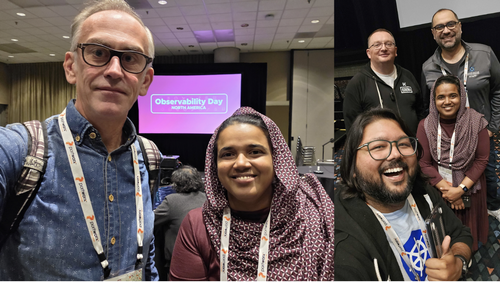
Day 0 also included the CNCF TOC Workshop, where we reflected on the past year, planned for the next, and aligned on priorities. Working alongside TOC members from various organizations is always inspiring.
Day 1 was buzzing with energy and nerves. I hosted the keynotes for all three days, an exciting experience with nearly 9,000 attendees. The day included visits to the Project Pavilion and Istio Booth, seeing sandbox projects I had helped move to incubation as a CNCF TOC Member — KServe and OpenFGA. Meeting maintainers in person was delightful. The CNCF TOC + Governing Board + End User TAB sessions offered invaluable feedback. I also attended community gatherings that I personally vouch for: the Women’s Community Gathering and the Merge + Meet kickoff for underrepresented groups and allies.
The day concluded with a wonderful dinner hosted by Phil Robb for Ericsson attendees — a perfect chance to connect with my colleagues in person and spend time together at the Project Pavilion and other booths throughout the conference.
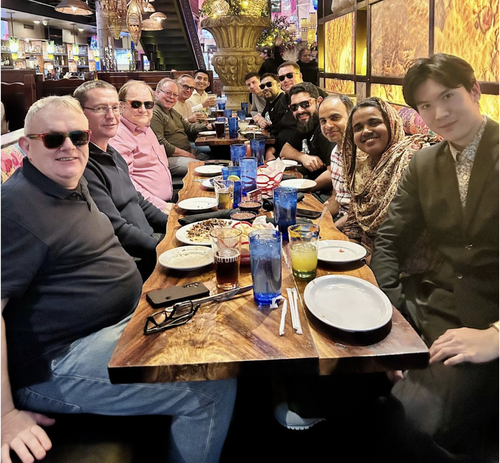
Day 2: My Dream Keynote Panel – Cloud Native for Good

Day 2 of KubeCon NA 2025 was the most emotional day for me — the day I delivered my keynote panel, Cloud Native for Good. This panel wasn’t born overnight. It grew from a spark that appeared right after KubeCon EU 2025 in London, when I first began thinking:
'What if we could use the KubeCon keynote stage to tell stories of how cloud-native technology changes real human lives? Not just products, not just architectures — but impact.'
At that point, I had no idea who the panelists should be. All I knew was that I wanted stories where technology met humanity, where cloud-native wasn’t just powering systems… but saving lives.
And my mind went back to 2018, to one of the most painful and inspiring chapters of my life. My home state, Kerala, was devastated by catastrophic floods. The state was overwhelmed — but the tech community wasn’t. Overnight, volunteers, engineers, and the IEEE community came together to build a website that coordinated rescue and relief efforts. It connected stranded families, government responders, and volunteers during the darkest hours. A year later, the same community mobilized again to help fight COVID-19.
That experience has stayed with me for years. It was the first time I saw technology become a lifeline. So naturally, when the “Cloud Native for Good” idea took shape, that memory resurfaced. But at that stage, I didn’t yet know how to bring it into the cloud-native world, or whether anyone from those initiatives had moved into the CNCF ecosystem.
Then something unexpected happened.
Around this time, Arun Gupta — my colleague at CNCF — reached out and told me he was organizing the Tech Over Hackathon at the United Nations, and asked whether I would be interested in being a judge. I had never imagined myself walking into the United Nations, let alone participating in an event there. But when I shared with Arun my cloudy, early idea about a “Cloud Native for Good” keynote, he immediately became even more excited than I was.
He started asking around on my behalf, looking for people and stories across the humanitarian and public-sector ecosystem that could fit this idea. And through Arun, I got connected to Omar Mohsine, the United Nations Open Source Coordinator, and in parallel, to teams working on UNICEF and ITU initiatives.
But perhaps the most surprising moment of all — something I still smile about — was meeting Bodhish Thomas at the United Nations. Completely unexpected. Out of all places in the world, I ran into someone who had been part of the very Kerala initiatives I had been thinking about when the panel idea first formed. It felt like my past and present collided in the grand halls of the United Nations. Suddenly, the story had a face, a voice, and a real cloud-native connection.
Meanwhile, through my friend Divya Mohan(who had also come to the UN), I was introduced to the Child Rescue Coalition — an organization doing extraordinary work using technology to protect children from online exploitation. Their mission embodies everything “tech for good” stands for.
And finally — to anchor the panel in the US humanitarian landscape — Chris Aniszczyk, CTO of CNCF, suggested including the American Red Cross. It was the perfect addition. No conversation about humanitarian impact in the US feels complete without them.
And just like that, the pieces came together. A panel that spanned:
- local community-driven rescue during the floods,
- large-scale public health systems in India,
- global digital collaboration at the United Nations,
- child protection across more than 100 countries,
- and humanitarian response across the United States.
A panel powered not just by cloud-native technology — but by people who believe technology can, and should, save lives.
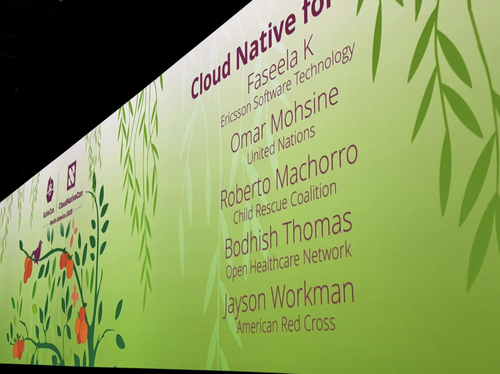
Onstage, each organization shared how cloud-native has become a backbone for mission-driven work. Omar Mohsine showed how Kubernetes and open standards enable global collaboration, supporting UN initiatives like Giga and the UN Global Data Platform. Bodhish Thomas described how cloud-native systems support digital public health delivery across multiple Indian states, powering ICUs, patient monitoring, and community healthcare for millions. The Child Rescue Coalition shared how cloud-native infrastructure helps process tens of millions of digital leads each day to protect children in over 100 countries. The American Red Cross demonstrated how Kubernetes, ArgoCD, and open observability tools improve disaster response, logistics, and blood delivery — allowing more resources to flow directly to communities. Together, these stories sent a clear message: cloud-native tooling isn’t just powering applications, it’s powering hope, safety, health, and humanity.
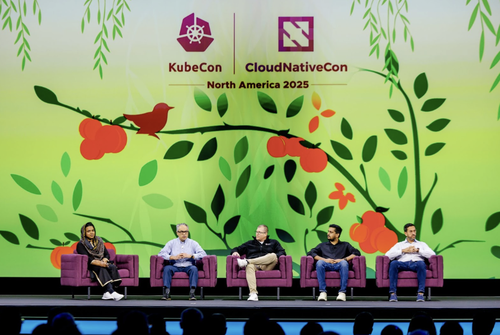
I also highlighted CNCF Tech-for-Good initiatives, such as Call for Code, Cloud Native Hacks at KubeCon EU 2024, and member-driven events like Infosys’ tech-for-good programs. It was rewarding to show that cloud-native projects are making tangible differences in the world.
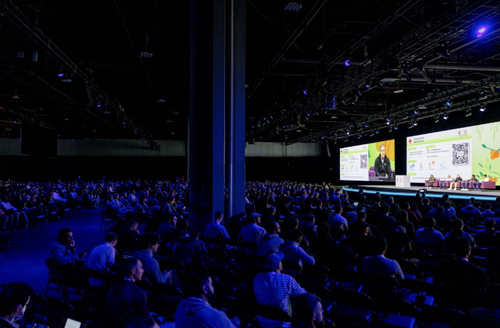
The keynote was very well received. It rang a bell with many attendees because the stories were simple, human, and directly relatable — not overly technical. Numerous people stopped me in the hallways to congratulate me on assembling such a stellar panel and to discuss what cloud-native does for humanity. Attendees appreciated seeing concrete examples of how CNCF projects like Kubernetes, Prometheus, OpenTelemetry, and Grafana translate into real-world outcomes: faster disaster response, better public-health monitoring, and life-saving operations protecting children. Many remarked that it helped them finally understand the tangible impact of cloud-native and reminded them why they became technologists in the first place. A large fraction of KubeCon attendees are first-timers every year, and many of them told me this keynote helped them immediately connect to the conference — the real-world use cases made the technology feel more approachable and meaningful from the very beginning.
For me, it was a deeply personal moment — a merging of my roots, my work, and my belief in technology as a force for good. It reminded me that the systems we build eventually land in places where human lives depend on them. Technology is at its most powerful not when it scales efficiently, but when it scales compassion.
You can watch the video here on YouTube.
Day 2 – Istio ContribFest
Also on Day 2, I joined the Istio ContribFest session, From Farm (Fork) to Table (Feature): Growing Your First (Free-range Organic) Istio PR, alongside Ian Rudie, Lin Sun, and Steven Jin. Together, we guided attendees through the Istio codebase and helped them make their first contributions to the project.

Day 3 – CNCF TOC Panel
Day 3 featured the CNCF TOC panel, moderated by Bob Killen, where attendees asked questions about CNCF’s technical direction, project focus areas, security improvements like “rustification,” and priorities for upcoming incubations. It was a rewarding conclusion to the conference, reflecting the community’s curiosity and engagement.

Overall, KubeCon NA 2025 was deeply rewarding. From months of co-chair planning, delivering talks and keynotes, participating in panels and workshops, to connecting with my Ericsson colleagues and the broader CNCF ecosystem, the experience reminded me how collaboration, passion, and shared values make the cloud-native community extraordinary.
A heartfelt thank you to my colleagues at Ericsson — especially the Ericsson Software Technology team — who supported me throughout the week, showed up for my sessions and the keynote, captured countless photos, amplified every moment on social media, and made the entire experience even more special.I also want to express my gratitude to the broader CNCF community and my colleagues across the ecosystem — from the CNCG Aachen meetups all the way up to the CNCF staff and the TOC — whose constant encouragement, collaboration, and support shaped every part of my KubeCon NA journey.
I am eagerly looking forward to KubeCon Amsterdam 2026, my final event as program co-chair, and working with my fellow co-chairs to deliver an even more inspiring experience."
